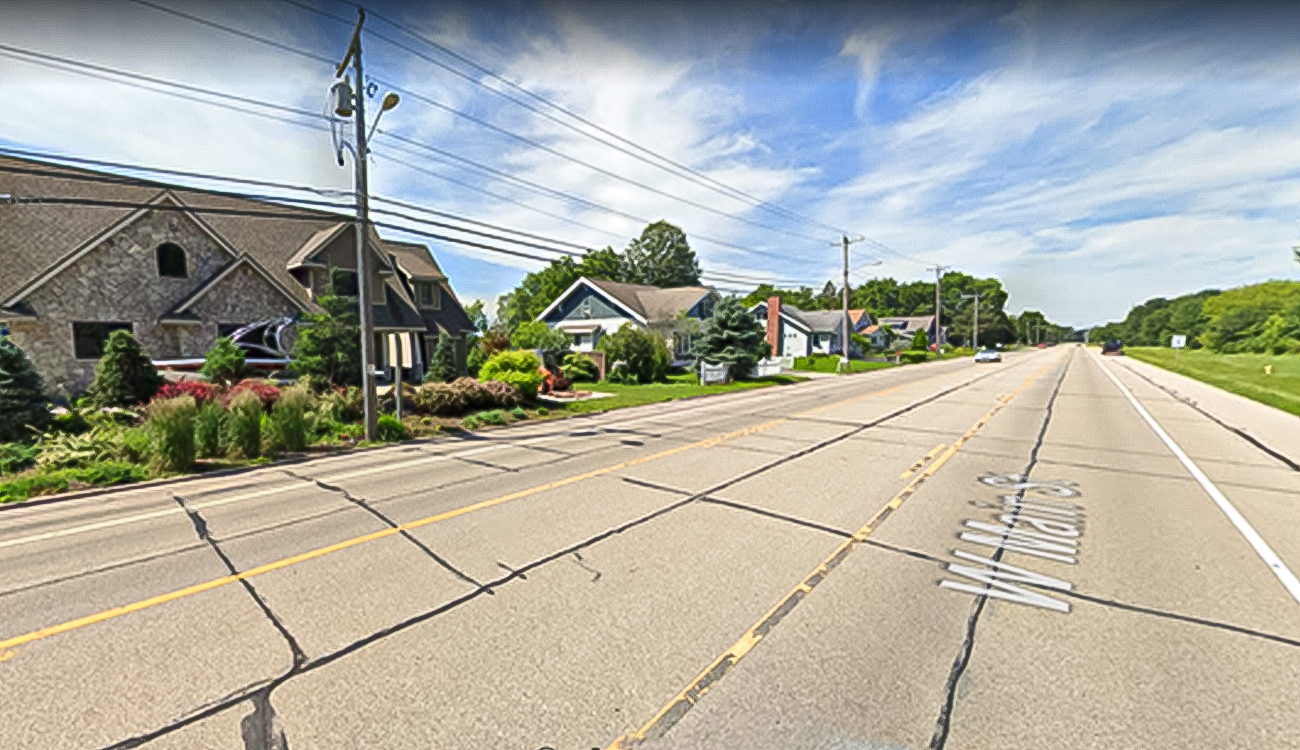
Highway 96
Part II of an Ongoing Case Study in Advocacy
In the second installment of his case study about one small stretch of highway in the Fox Cities, Jason Brozek rides with Kim and learns more about how a regional planning commission plays a role in advocating for safe bike infrastructure.
In the introduction to this series about one small stretch of Highway 96 between Appleton and Little Chute, I laid out both the opportunity for safer bike infrastructure and the complex web of administration that governs design and maintenance. I want to complicate that web a little more by introducing one more layer – and maybe the one that’s least familiar to most folks out riding Wisconsin’s streets and highways.
Kim Biedermann from East Central Regional Planning Commission is a longtime rider who I met through the Outagamie County Greenway Advisory Committee, and last week, we met up to ride this section of Highway 96 together. Below is a lightly edited and condensed version of our chat:
Jason: Could you describe the general role of a regional planning commission in Wisconsin?
Kim: As the name suggests, regional planning commissions (RPCs) work on issues that span
across an entire region. RPCs also support local communities with state and federal
programs, act as a coordinating agency for programs and activities, and provide
planning and development assistance to local governments. At East Central, we work in
a 10-county region to provide the basic information and planning services necessary to
solve problems which transcend the corporate boundaries and fiscal capabilities of
individual governmental jurisdictions.
We have four core areas of planning, one of those being transportation. In addition to
being a regional planning commission, we are also the Metropolitan Planning
Organization (MPO) for the Appleton (Fox Cities) region and Oshkosh. Essentially,
MPOs represent areas of more than 50,000 people and supports transportation planning
efforts, including long-range planning, across jurisdictional boundaries.
J: Am I right that it sort of coordinates the work of counties and cities, but at a more granular level than the state government?
K: In terms of landscape, regional planning commissions work at a much more regional
level—there are nine in the state, each with a designated region. As a regional entity, we
aren’t responsible for building or maintaining infrastructure. It’s more of our role to listen
to communities on their needs and plans, and we then coordinate with those
communities to help them achieve their planning goals through facilitating conversations
between communities, providing mapping assistance, sharing best practices, and
serving as a resource on funding opportunities.
J: Getting more specific about the East Central Regional Planning Commission, can you say a bit more about your role with the organization?
K: My position with the organization is the Regional Bicycle and Pedestrian Coordinator. In
this role, I work with communities and partner organizations to implement bicycle and
pedestrian plans, including one that East Central has for the urbanized areas of
Calumet, Outagamie, and Winnebago counties; assist communities in updating or
developing bicycle and pedestrian plans; collect and providing active transportation data
back to communities; work on local studies, like an economic impact study of bicycle and
pedestrian facilities that we just kicked off; and provide other technical assistance to
communities.
J: On our ride, you mentioned that ECWRPC is finalizing your bike & ped plan for the region. Can you say a little bit more about what that means and what it entails?
K: Yes, we are in the process of wrapping up the update to our bicycle and pedestrian plan.
This plan covers the urbanized areas of Calumet, Outagamie, and Winnebago counties, and it focuses on the regional connectivity of the bicycle and pedestrian network in
the Fox Cities and Oshkosh areas. It looks at the planned facilities for each community, and it then identified gaps, barriers, and needed connections to enhance the safe,
equitable, accessible, and convenient network throughout the region. This plan also
outlines various activities and actions that can be taken to complement the built network,
like designing wayfinding signage and creating trail etiquette campaigns.
During this update process, we know a lot has happened between 2014—when the plan
was first created—and now, like the completion of Loop the Little Lake, which connects
Neenah, Menasha, and Fox Crossing and the expansion of the Oshkosh Riverwalk. But
we know critical gaps and barriers still exist, and many of these gaps and barriers will
take coordination across multiple municipalities and stakeholders to address.
J: Overall, what’s your impression of Highway 96, and at least in a preliminary way, how might something like this fit into the new bike & ped plan?
K: State Highway 96 is identified as part of the regional bicycle and pedestrian network. It
connects Appleton to Little Chute, and from Little Chute, people can cross the Fox River
via the newly constructed Nelson Family Heritage Crossing to Kaukauna and other
communities south of the Fox River. We also know this corridor, like many other
corridors throughout the state, are complicated from the perspective of ownership: it
traverses several communities, but it is also a state highway that is maintained by the
County. With so many partners, it involves a tremendous amount of coordination,
agreement, and funding to make enhancements or improvements. At East Central, we
can work with communities and partner organizations to achieve a shared vision on
complex projects, like State Highway 96.
Jason Brozek lives in Appleton, where he’s a longtime bike commuter and recreational rider. He teaches politics & policy at Lawrence University, and sits on the city’s Bike & Pedestrian Advisory Committee and the Outagamie County Greenway Implementation Committee.